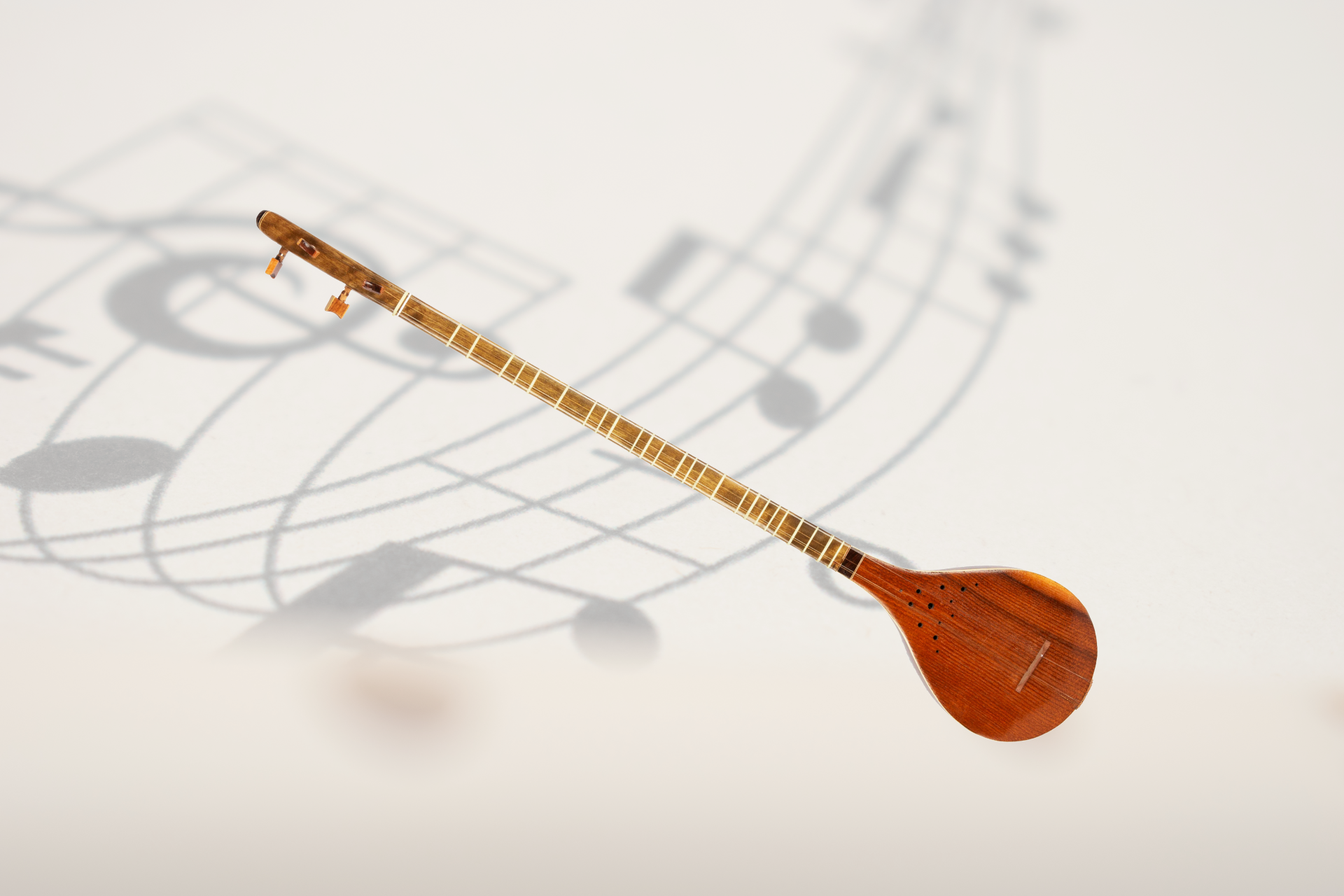General Articles
Crafting the Perfect Setar
The setar, a traditional Persian string instrument, is not only a symbol of cultural heritage but also a masterpiece of craftsmanship. Its delicate structure and enchanting sound are the result of meticulous attention to detail, traditional techniques, and the skill of artisans who dedicate their lives to preserving this art form. Understanding how a setar is made provides a deeper appreciation for its beauty and the cultural significance it holds.
The History and Cultural Significance of the Setar
The setar has been a cornerstone of Persian music for centuries. Its name, which translates to "three strings," originates from its early design, though modern setars typically have four strings. This instrument has played a vital role in classical Persian music, often used to accompany poetry and spiritual practices. The setar’s sound is known for its emotional depth, capable of expressing a wide range of feelings from joy to melancholy.
Artisans who craft the setar carry on a tradition that dates back hundreds of years. Each instrument is a blend of history, culture, and personal expression, making every setar unique. This uniqueness begins with the selection of materials and continues through every step of the crafting process.
Selecting the Right Materials
The first step in crafting a setar is choosing the right materials. The body of the setar is typically made from mulberry or walnut wood. These woods are favoured for their resonance and durability. The neck is often crafted from harder woods like walnut or ebony to ensure stability and ease of play.
The soundboard, a critical component that influences the instrument’s tone, is made from thin pieces of mulberry wood. Artisans carefully select wood with the right grain and density to achieve the desired sound quality. The strings, traditionally made from animal gut, are now often crafted from nylon or steel, offering durability and consistency.
Each material is chosen not only for its functional properties but also for its ability to contribute to the instrument’s aesthetic appeal. The natural grain of the wood, combined with intricate carvings and inlays, makes each setar a work of art.
Shaping the Body
The body of the setar, or the bowl, is the first major component to be crafted. Artisans begin by hollowing out a block of wood or assembling thin strips of wood into a bowl shape. This process requires precision, as the shape and thickness of the body directly impact the instrument’s sound.
Once the bowl is formed, it is sanded and polished to create a smooth surface. Some artisans add decorative elements, such as carvings or inlays, to enhance the instrument’s visual appeal. These decorations often feature traditional Persian motifs, adding another layer of cultural significance to the setar.
Crafting the Neck and Pegbox
The neck of the setar is a long, slender piece of wood that connects the body to the pegbox. It must be perfectly straight and smooth to ensure proper string tension and playability. The neck is carefully shaped and sanded, with grooves carved into it to hold the frets.
The pegbox, located at the end of the neck, houses the tuning pegs. These pegs are typically made from hardwood and are designed to hold the strings securely while allowing for precise tuning. The pegbox is often adorned with carvings or other decorative elements, reflecting the artisan’s skill and creativity.
Constructing the Soundboard
The soundboard is one of the most critical components of the setar. It is responsible for amplifying the vibrations of the strings and shaping the instrument’s tone. Artisans carefully select thin pieces of mulberry wood for the soundboard, ensuring that it is both lightweight and strong.
The soundboard is meticulously carved and sanded to achieve the desired thickness and shape. Small holes are often added to the soundboard to enhance resonance and projection. Once complete, the soundboard is attached to the body using adhesive, creating a seamless connection that allows sound to travel freely.
Adding the Frets and Strings
The frets of the setar are made from thin pieces of gut or synthetic material. These frets are tied around the neck of the instrument and can be adjusted to change the pitch of the strings. The ability to move the frets gives the setar its unique versatility, allowing musicians to play a wide range of scales and modes.
Once the frets are in place, the strings are added. Modern setars typically have four strings, each tuned to a specific pitch. The strings are stretched from the pegbox to the bridge, a small piece of wood on the soundboard that supports the strings and transmits their vibrations to the body.
Finishing Touches
After assembling the setar, artisans add the finishing touches that make each instrument unique. This includes polishing the wood to enhance its natural beauty and applying protective coatings to prevent damage. Some artisans add intricate inlays or other decorative elements, turning the setar into a visual as well as auditory masterpiece.
The final step is tuning the instrument and testing its sound. Artisans play the setar to ensure that it produces the desired tone and resonance. Any necessary adjustments are made to the frets, strings, or soundboard to perfect the instrument’s performance.
The Role of Modern Technology
While traditional techniques remain central to setar crafting, modern technology has also made its mark. Tools such as laser cutters and computer-aided design (CAD) software allow artisans to achieve greater precision and consistency. However, the heart of the process remains the artisan’s skill and intuition, which cannot be replicated by machines.
Modern materials, such as synthetic strings and advanced adhesives, have also improved the durability and playability of the setar. These innovations ensure that the instrument can meet the demands of contemporary musicians while maintaining its traditional charm.
Why Handcrafted Setars Stand Out
Handcrafted setars are prized for their superior quality and unique character. Unlike mass-produced instruments, each handcrafted setar is a reflection of the artisan’s dedication and expertise. The attention to detail and use of high-quality materials result in an instrument that not only sounds exceptional but also holds sentimental and cultural value.
Musicians often form a deep connection with their handcrafted setars, appreciating the care and effort that went into creating them. This connection enhances the playing experience, allowing musicians to express themselves more fully through their music.
Preserving the Art of Setar Making
The art of crafting the setar is a vital part of Persian cultural heritage. Efforts to preserve this tradition include training new generations of artisans, documenting traditional techniques, and promoting the instrument through performances and workshops.
Organizations and individuals dedicated to preserving Persian music and culture play a crucial role in ensuring that the art of setar making continues to thrive. By supporting these efforts, we can help keep this beautiful tradition alive for future generations.
Discover the Beauty of the Setar
The setar is more than just an instrument; it is a symbol of Persian artistry and culture. Its delicate construction and enchanting sound are a testament to the skill and dedication of the artisans who craft it. Whether you are a musician, a collector, or simply an admirer of fine craftsmanship, the setar offers a glimpse into a rich cultural tradition that continues to inspire and captivate.
For those looking to explore the world of the setar, Rhythm Music Shop provides a wide selection of traditional instruments and expert guidance. Serving Markham, Richmond Hill, North York, Scarborough, and the rest of the GTA, Rhythm Music Shop is your destination for discovering the beauty of Persian music. Visit us today to find the perfect setar for your musical journey.

